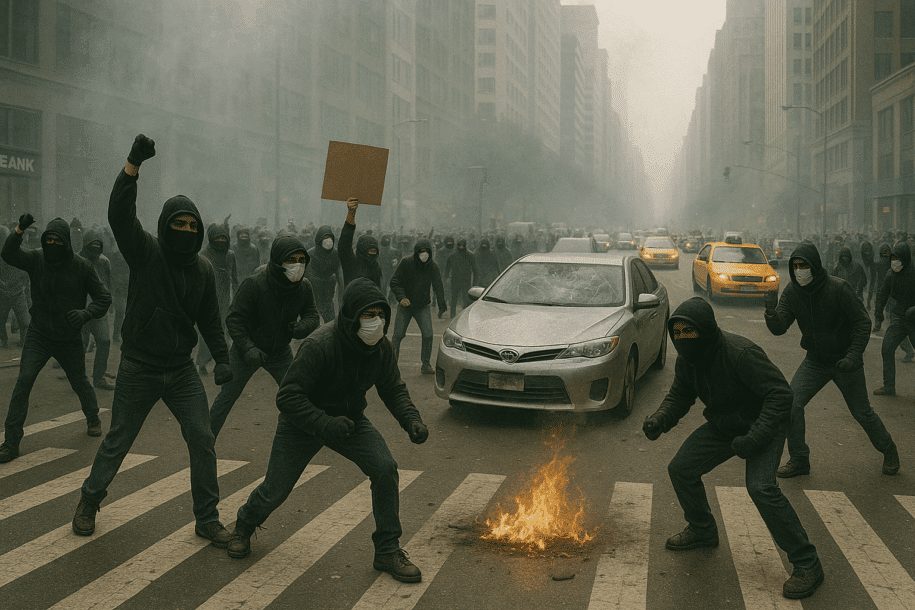Self Defense in a Riot
In a society governed by the rule of law, the right to defend oneself against unlawful violence is fundamental. However, the context of that violence—particularly in chaotic, fast-evolving scenarios like riots—raises complex legal and ethical implications. Understanding your decisions around when and how you may legally defend yourself during a riot is critical, especially when seconds matter and the wrong decision could mean serious legal consequences or physical harm.
This email explores how the law views self-defense during riots, with particular attention to deadly force, the concept of imminence, vehicle entrapment, and the defense of others.
Deadly Force and the Imminent Threat Standard
At its core, the lawful use of deadly defensive force is based on a very specific standard: you must have a reasonable belief that you are facing an imminent threat of unlawful deadly force—defined as force likely to cause death or serious bodily injury.
In a riot scenario, such a threat can arise quickly and unpredictably. For instance, if an aggressor is preparing to throw a Molotov cocktail—an incendiary device with lethal potential—that clearly constitutes a deadly force threat. The law does not require you to wait until you’re burned or assaulted. The threat only needs to be imminent, meaning it’s about to happen. If someone is lighting the wick and preparing to throw, you are within your rights to act in defense, including the use of deadly force, to stop the attack.
This principle applies whether the target is you or another innocent party. The doctrine of defense of others allows the use of force to protect someone else facing the same imminent deadly threat—though this comes with additional legal risk, as you must be sure your intervention is justified under the same standard.
Your Vehicle as Defensible Property
One of the most common real-world scenarios during riots involves people trapped in their vehicles by violent or aggressive rioters. These are not peaceful protests—these are mobs using threats, intimidation, and sometimes physical violence to trap drivers.
Under California law, such an act is not only unlawful—it may rise to felony false imprisonment. The crime is defined as unlawfully restraining someone against their will through force or threat of force. If a mob is surrounding your vehicle, banging on it, or preventing you from leaving an intersection, they are not exercising free speech—they are committing a felony.
In many states, your vehicle is considered “highly defensible property,” similar to your home. Laws in these states establish legal presumptions that if someone unlawfully and forcibly attempts to enter that property—such as by smashing a window, trying to open the doors, or climbing inside—then you are presumed to be in fear of imminent deadly force. This presumption supports your legal right to use deadly defensive force, including using your vehicle to escape or run over an attacker if necessary.
However, California does not have such statutory presumptions. This means that your self-defense claim will rely entirely on the totality of the circumstances and how clearly your fear of death or serious harm can be justified as reasonable.
Use of a Vehicle as a Weapon
While driving a vehicle into another person would normally constitute a criminal act, context matters. If you reasonably perceive that remaining in place exposes you to serious harm—being pulled from the vehicle, beaten, or burned—you may be justified in using the car as a means of escape, even if that escape results in injury to an aggressor.
Self-defense is a justification defense. That means even otherwise criminal conduct (like striking someone with your car) is not unlawful if it was done to prevent imminent deadly harm. But this protection only applies if your actions were reasonable, proportionate, and necessary under the circumstances.
Documentation and Perception
Another harsh reality of defending yourself in riot situations is optics and documentation. Rioters often record events and frame narratives to cast defenders as aggressors. The mob will not see you as a victim. In their view, you are “the enemy” and every action against you is morally justified. Conversely, any action you take to escape or defend yourself is portrayed as an attack.
This means it is crucial to understand that you will be judged later by others—a prosecutor, a jury, or the media—based on what evidence is available. Installing dash cams or having witnesses can be essential for verifying that your use of force was truly justified.
The Cost of Inaction
Choosing not to act also carries consequences. The case of Reginald Denny during the 1992 Los Angeles riots remains one of the most tragic examples. Trapped by a mob, pulled from his truck, and beaten with bricks and pipes, Denny suffered permanent brain damage. His attackers were arrested, but he was left with life-altering injuries—and no one came to help.
You cannot count on law enforcement to arrive in time. In riot situations, police are often overwhelmed or ordered to stand down. That means you are your own first responder.
What You Should Know and Do
Know your state laws: Do you live in a state with “Castle Doctrine” protections that apply to your vehicle? Are there legal presumptions in place if someone forcibly enters your car? If not, you must be even more careful in how you justify your use of force.
Understand the standard: You are only permitted to use deadly force if you reasonably believe you’re facing an imminent threat of death or serious bodily injury. That belief must be objectively reasonable to others as well.
Document your surroundings: Install dash cams or keep your phone ready to record. Evidence is often the only difference between self-defense and prosecution.
Have an escape plan: If you’re stuck in traffic and a mob approaches, how will you maneuver out? The time to think about it is before it happens.
Conclusion
The right to self-defense is absolute—but its application is governed by strict legal standards. During a riot, when the rules of civilized society seem suspended, your ability to survive physically and legally will depend on your understanding of those standards and your ability to articulate a reasonable fear of imminent deadly harm.
Violence during riots is not hypothetical—it is real, and it has a legal name. Arson, false imprisonment, attempted murder—all of these can occur during these events. If you find yourself in the path of a violent mob, knowing your rights and responsibilities could be the difference between life and death—not just in the street, but in a courtroom.

